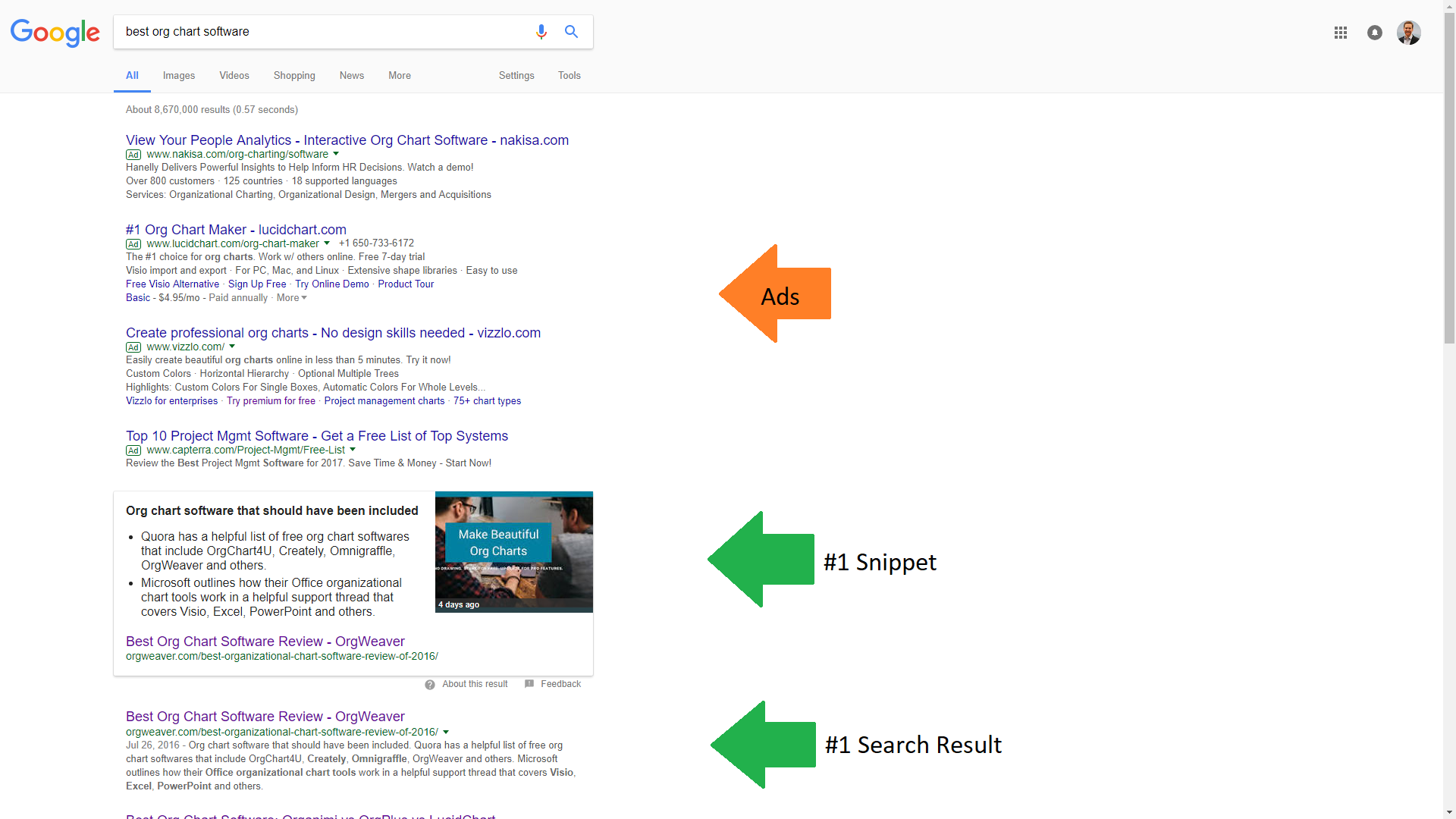I'd never tell a potential investor that we could grow MRR by 5x with a non-existent marketing budget.
Promises like that are "pie-in-the-sky", don't get taken seriously, and end up being broken.
In fact, I didn't even let myself believe that that kind of growth with zero marketing budget would be possible. I'm not good enough for that.
As my father always said, "Better to be lucky than good."
So, here's my story of how OrgWeaver, our B2B SaaS product for org charts, got lucky and grew Monthly Recurring Revenue by 500% in 12 months.
Giving up on AdWords (for now)
We were spending about $1,000 a month on AdWords with keywords like "org chart software". They're competitive keywords, but we were getting incredible click-through rates of 20%. And then 25% of those who clicked became users of our free product. Stats like that made us think we were on the right path.
But with low conversions to our paid plans, we were clearly reaching the wrong audience to actually grow our business.
Something had to work better. So, we put AdWords on pause even though we knew it would crater our "new sign-ups" metric. It was a vanity metric, anyway. Revenue is what matters.
Trying blogging (again)
We've blogged about our product in the past, but never got any traction. We'd cover such interesting topics as "Look, our product is great!" and "Hey everyone, check out our neat Microsoft integration!".
So, I went back to basics and actually followed some advice:
- Focus on customer problems, not the product
- Steal from the best
- Add value to the reader
I started by Googling "org chart software" and read the top results. There were a lot of product pages, but very high in the rankings was a blog post comparing the "best org chart software" for small businesses.
Right away, I could see that small businesses need to know how to make org charts, and that there is a lot of factors to sift through to make the right choice.
I stole the topic of "best org chart software" because I knew it was a real problem and could add value to the reader (and hopefully climb to the top of Google). I wrote the article in a couple hours, made sure to be fair and clear about the org chart functionalities on the market, and promptly forgot about it.
Here's how the post turned out: http://orgweaver.com/best-organizational-chart-software-review-of-2016/
Blogging is time-consuming and as a "do-it-all" co-founder, I wasn't ready yet to devote all of my time to a marketing tactic that was unproven.
Proof that blogging works (given time)

As of today, the blog post I wrote over a year ago is the top snippet and #1 search result for the search term "best org chart software".
I don't pretend to understand Google's search algorithm, or how they choose snippets. All I know is the blog I wrote must have been more relevant and useful to searchers than every other blog post and product page devoted to the subject. That's far more powerful than the 4 advertisers at the top of the results that are paying for every click.
However, it took a long time to reach the top of Google. It was an experiment, not a strategy.
In the first month, it got 14 pageviews. By month 12, it was getting 1,279 pageviews.

The lesson is: be patient and make sure you're attracting new customers some other way while you wait for blogging to work.
Revenue matters (for real)
Pageviews are nice, but revenue is what matters. My story of getting lucky with one blog post is only significant because of MRR growth. During the time we had paused AdWords and were only marketing with our blog, our MRR grew 5 times.

Hot tip: That MRR chart was made by ChartMogul. We love that ChartMogul handles all of the detailed MRR calculations for us. They're so kind to offer a free version of their tool that does all of the essentials.
Hints at a future strategy (time to be good)
OrgWeaver can't grow another 5x from one lucky blog post. We need a reliable strategy that keeps our CAC payback period at 6 months or less. Here's some hints at how we can do it:
- Blog more
- Re-target blog readers on social networks (to cement awareness)
- Give new customers a smooth sign-up process (no sales calls, no pressure, just a low-cost subscription paid with a credit card)
- Segment our best customers and create more content that will reach like-minded people
Know more than me about this kind of stuff? Reach out and I'll happily listen.

Got a question for
Or check out other discussions founders are having about startups and bootstrapping.